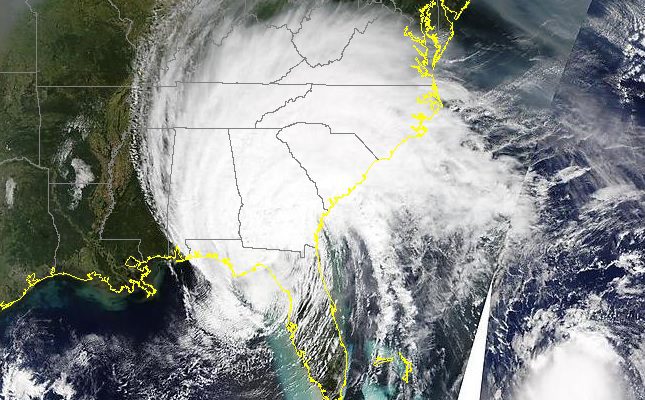Climate science
-

With a La Niña forecast to occur this winter, you might be wondering where the forecast for warmer and drier than normal conditions comes from. It is based on statistical patterns derived from previous episodes. NOAA’s Climate.gov has provided a nice set of maps which shows how historic La Niña events since 1950 have looked.…
-

Today’s football game in Athens is being played in temperatures far above normal, although they are not quite as close to record-setting highs as we experienced earlier this week. In fact, in much of the Southeast temperatures the last two weeks have been more like July or August than mid-October, although that should change tomorrow…
-

Are you tired of hot, humid conditions? Ready for some of the cool stuff? I can’t change the weather in the Southeast, but I can give you a preview of when typical winter conditions begin, thanks to Barb Mayes Boustead, Steve Hilberg, and Martha Shulski via Twitter. You can read more about their work at…
Posted in: Climate science -

I am always interested in learning more about how the earth was formed and developed over time, and this new Popular Mechanics story introduces a new chapter in our understanding of the Earth-Moon system. A study recently published by NASA shows that several billion years ago, the moon had a relatively thick atmosphere compared to…
Posted in: Climate science -

One of the things that weather events of the past month have taught us is that our society is not prepared to deal with extreme weather that we already know from experience is happening now. Over 60 inches of rain near Beaumont TX in just a couple of days! Winds of 185 mph in Puerto…
-

Business Insider has a very good article describing the reason why this Atlantic tropical season has been so active and what it might mean for the rest of this season. The story looks at the lack of wind shear aloft which can “blow the top off” of developing storms, and the unusually warm ocean water…
-

When I was in college I spent a month traveling to Hawaii to learn about geology. Ever since, I have been intrigued by the islands and hope to go back there some day. Here is a look at recent climate trends in Hawaii and how they are affecting the islands there from NOAA at https://www.climate.gov/news-features/blogs/beyond-data/hawaii-and-pacific-islands-2017-has-been-anything-normal.